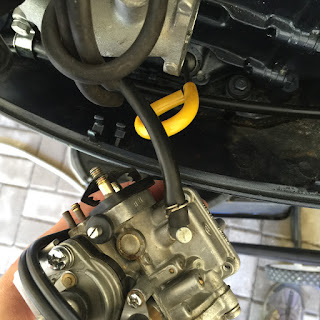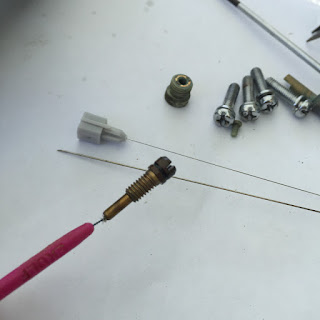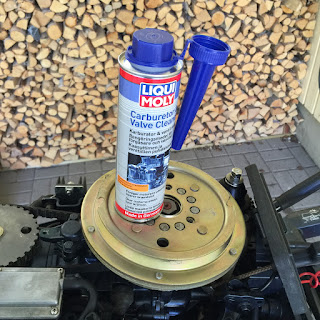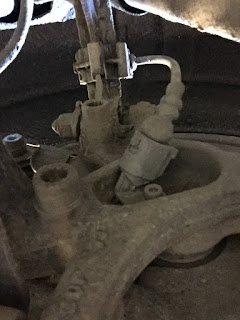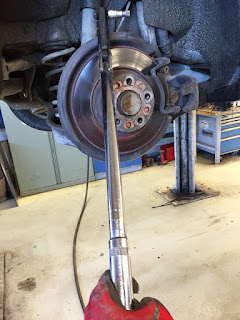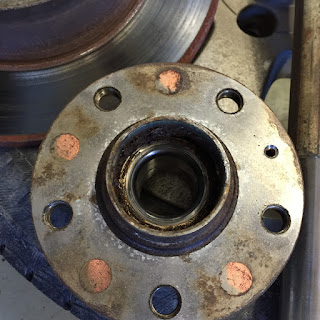For this you can figure out, that if you need to cover intake for motor to be able to run idle, it tells you something about fuel and mixture problems. The motor ran ok with higher rpm's but died on idle.
Covering the intake works like a manual choke and forces the carb to pull fuel. I came to a conclusion that the idle valve and passage must be clogged. The motor had been standing in warehouse for two years.
Again, i let the pictures speak:
Remove the carburetor. It is attached with two M6 nuts. Pull the vacuum hoses off. Remove fuel hose.
Remove the float chamber by opening four screws.
Open the nozzle with flat screwdriver. This exposes the main jet.
Unscrew the retaining screw and the main jet slides out
Here you can see the main jet and nozzle
The main jet. Cleanse thoroughly with petrol and make sure the little holes are open.
Pull out the nylon plug from idle jet passage. It is held there by an o-ring.
The idle jet under the nylon plug. This was covered in fuel residues and caused my idling problems.
Clean the idle jet with petrol. I used a small dental floss brush.
The jet hole was clogged. I opened it with thin needle. (inner needle of spinal tap needle)
I also used the needle to lean all other small passages.
Use air blower to clean all passages.
Remove the mixture valve.
Clean an inspect for any damage.
Screw the mixture valve back so that it seats gently (do not tighten hard to avoid damage). Back off about 1.5 rounds.
Assemble the parts back in reverse order. Remember to position the main jet in correct orientation (opening towards the intake manifold, secure with retaining screw). Install the carb back to intake manifold. Attach the throttle rod.
Attach the fuel line and vacuum tubes.
I also added carb cleaning agent in the fuel.
The motor ran idle straight away after the cleaning. Problem solved!

